Planting for year-round colour
The ultimate guide for ensuring visual interest in planting schemes during every season
Colour is one of the most powerful tools in landscaping. It shapes the atmosphere of a space, highlights seasonal change, and brings planting schemes to life for clients and communities. Yet colour in the landscape is not just about flowers. Leaves, berries, fruit, bark, and stems all contribute to the palette. By combining these elements, it is possible to create schemes that provide year-round interest, ensuring no season feels empty or forgotten.
Achieving continuous colour requires both an understanding of how and why plants display these features, and a careful choice of species to match seasonal rhythms. With the right planning, landscapes can offer spring blossoms, lush summer foliage, autumn berries and fiery leaves, and even winter stems that brighten the darkest days.
The science of colour in the landscape
Flowers are perhaps the most obvious source of colour. Plants produce flowers to reproduce, attracting pollinators such as bees, butterflies, and other insects. Flowering times vary according to species and are influenced by daylight length, temperature, and genetics. Early spring bulbs flower before tree canopies close overhead, while others wait for the longer days and higher temperatures of summer.
Fruit and berries tend to follow flowering. These are produced to protect and disperse seeds. Their bright colours are designed to attract birds and mammals, which eat the fruit and spread the seeds to new locations. In the landscape, this provides visual interest whilst also supporting biodiversity by feeding wildlife.
Leaves also play a vital role in seasonal displays. Most leaves are green through spring and summer due to chlorophyll, which enables photosynthesis. A little known fact, however, is that the pigment responsible for providing autumn leaves with their red/orange/yellow colour is actually present in the leaf throughout the year, but goes unseen behind the dominance of the green chlorophyll. As autumn approaches, chlorophyll breaks down due to the lack of photosynthetic activity, revealing pigments such as carotenoids and anthocyanins, which give the yellows, oranges, and reds of autumn foliage. These changes are driven by cooler temperatures and shorter days, a natural preparation for winter dormancy.
Even stems and bark contribute to year-round colour. Some species, particularly dogwoods and willows, develop striking stem colours in winter when leaves have fallen. These pigments help protect the plant from cold and sunlight damage, but for the landscape designer, they offer dramatic splashes of colour when most planting has retreated.
By combining all of these features, a planting scheme can be built to offer variety and resilience across the seasons.
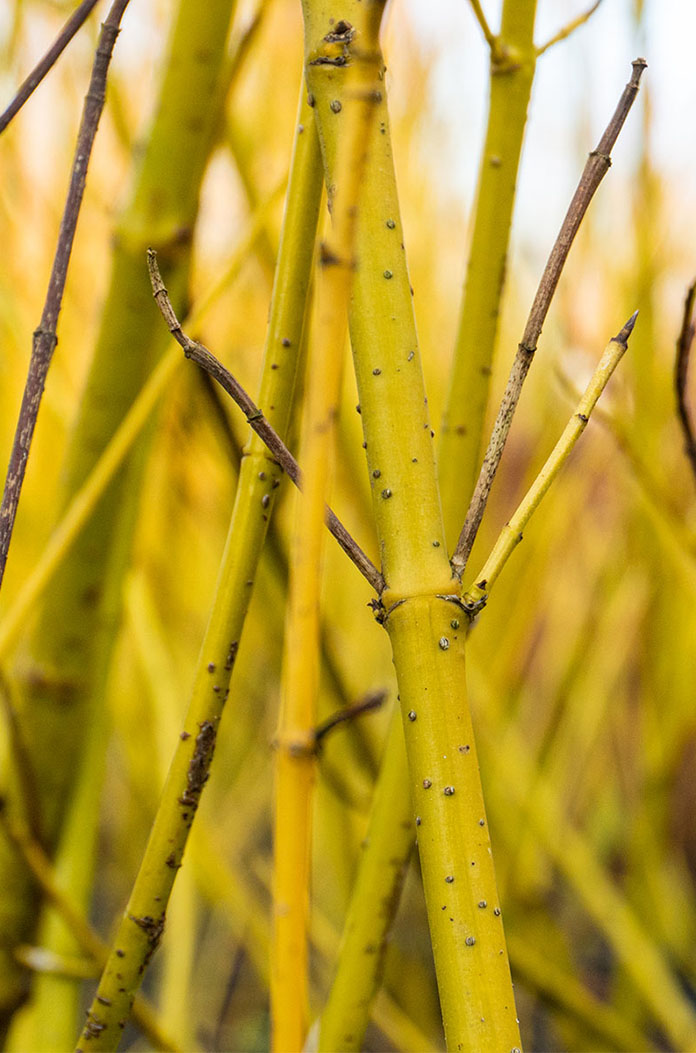
Cornus stolonifera Flaviramea
Colour through the seasons
Spring
Spring marks the start of the growing season and is often defined by blossoms. Trees such as Prunus avium, the wild cherry, a UK native, provide clouds of white flowers in March and April, followed by glossy green foliage. Amelanchier lamarckii is another favourite, offering delicate star-shaped white flowers early in the season, followed by bronze-tinted new leaves that turn green and later blaze orange in autumn. For shrubs, Forsythia x intermedia bursts into bright yellow flower before its leaves appear, lighting up hedgerows and borders.
Spring colour is not limited to flowers. Acer palmatum cultivars produce young foliage in shades of crimson or lime green, while ornamental crab apples such as Malus ‘Evereste’ combine white blossom with the promise of colourful fruit later in the year.
Our recommendations for spring colour:
Prunus avium (Wild Cherry)
UK native tree with masses of white blossom in March and April. Glossy green summer foliage follows, with red cherries later in the season. Works well as a statement tree in open sites.
Magnolia x soulangeana (Magnolia)
Large shrub or small tree producing showy, tulip-like pink and white flowers in early spring. Creates a bold focal point before foliage emerges.
Forsythia x intermedia (Forsythia)
One of the earliest shrubs to flower, producing vivid yellow blooms before leaves appear. Best in mass plantings or hedges for early-season brightness.
Cercis siliquastrum (Judas Tree)
Produces clusters of pink pea-like flowers directly on stems and branches in late spring, followed by heart-shaped leaves. Compact and eye-catching.
Acer campestre (Field Maple)
UK native small tree with bright green spring foliage, which matures into dense summer coverage and later turns golden-yellow in autumn.
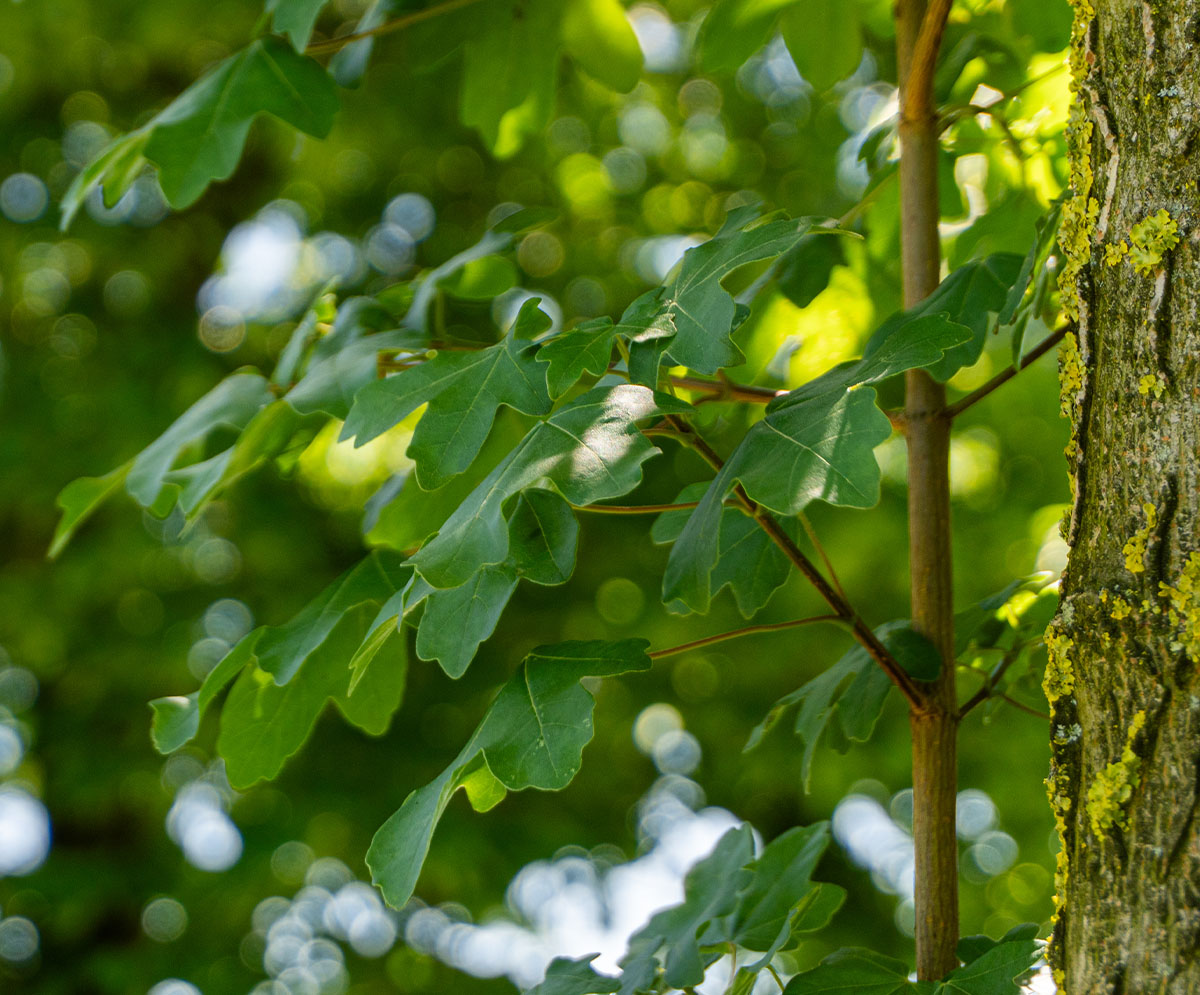
Acer campestre
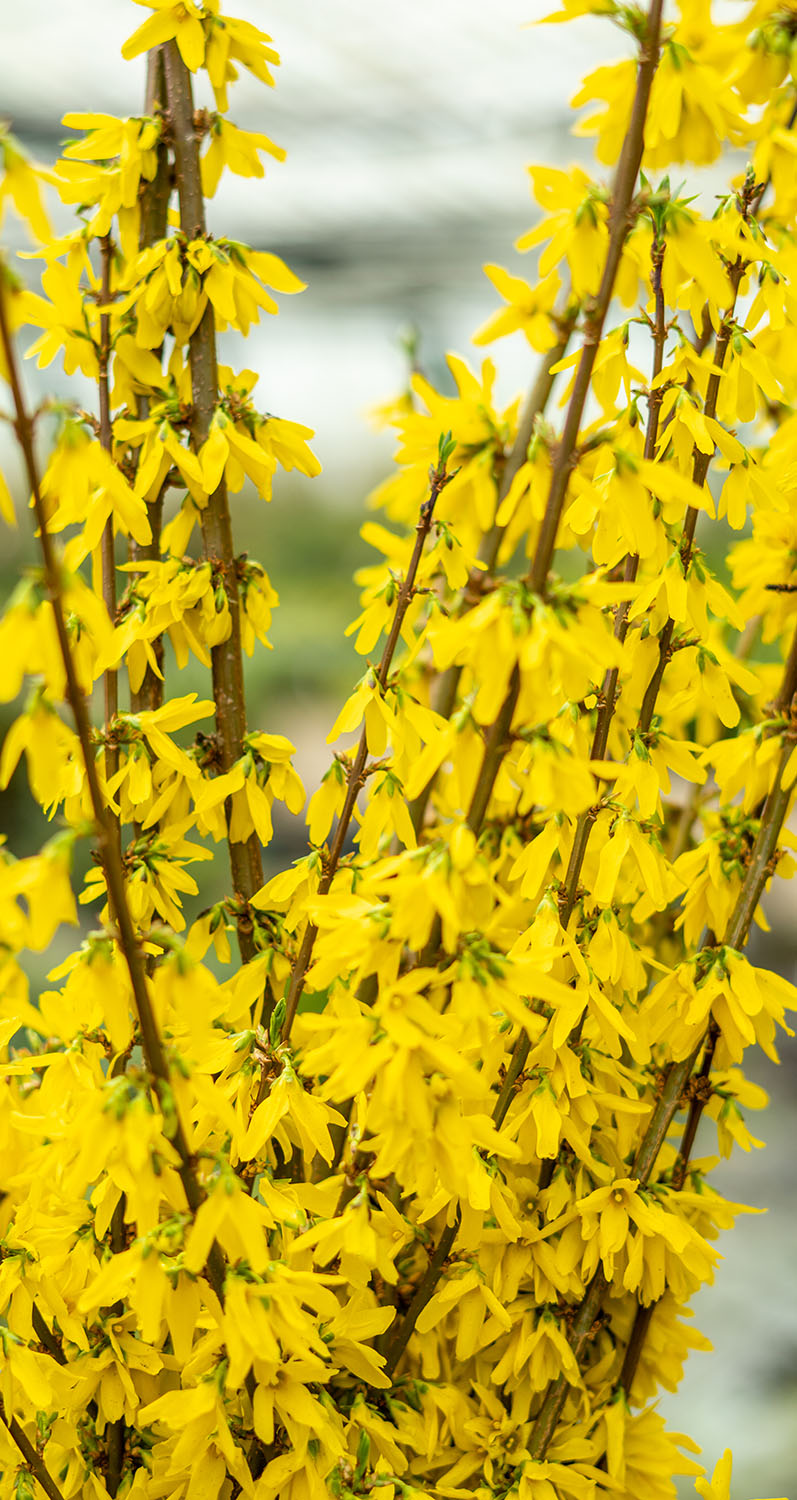
Forsythia x intermedia ‘Spectabilis’
Summer
Summer provides sustained colour through both flowers and foliage. Roses are a popular choice, with cultivars like Rosa rugosa providing not only long-lasting summer blooms but also autumn hips. Hydrangea paniculata cultivars are equally valuable, their conical flower heads shifting from white to pink as the season progresses. Perennials such as Geranium ‘Rozanne’ are also particularly useful, flowering from June into October with violet-blue blooms.
Foliage also contributes to colour in summer. Evergreens such as Photinia x fraseri ‘Red Robin’ produce vibrant red new growth that contrasts with older green leaves, while Cornus alba provides lush greenery in summer that will later give way to fiery winter stems. This layering of colour ensures interest beyond the flower season.
Our picks for summer colour:
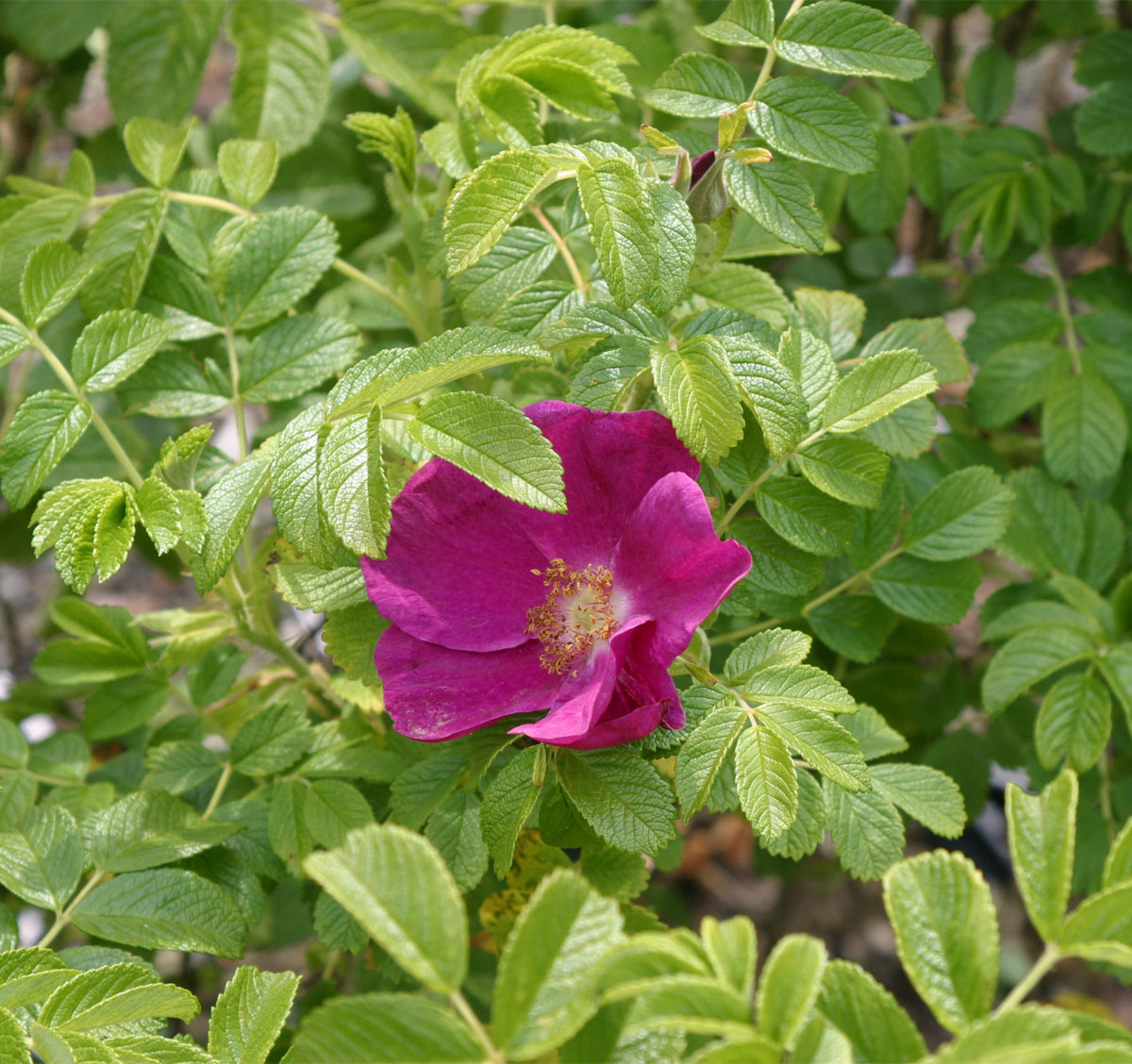
Rosa rugosa ‘Hansa’
Rosa rugosa (Rugosa Rose)
Tough and versatile shrub rose with fragrant pink or white flowers from June through to autumn. Produces bright red hips later in the year. Excellent for wildlife.
Hydrangea paniculata (Paniculate Hydrangea)
Large conical flower heads that open white and gradually age to pink or green through summer. Long-lasting blooms extend into early autumn.
Geranium ‘Rozanne’ (Cranesbill)
Perennial groundcover with violet-blue flowers from June to October. Easy to grow and reliable in mixed borders.
Photinia x fraseri ‘Red Robin’
Evergreen shrub with striking red new shoots contrasting against glossy green leaves. Provides foliage interest throughout summer and beyond.
Cornus alba (Dogwood)
Provides green summer foliage and white flowers in clusters. Later valued for autumn leaf colour and winter stem display.
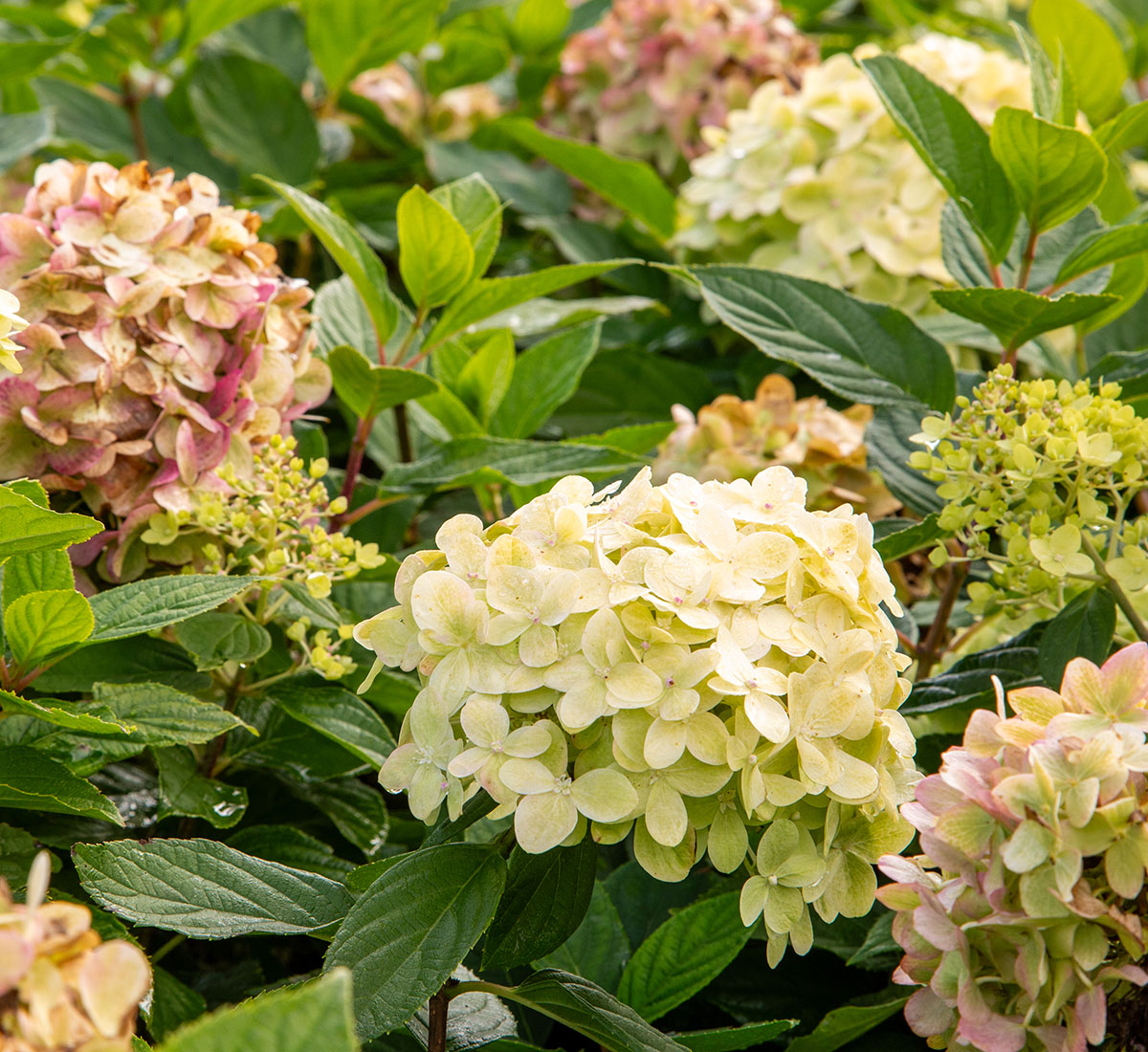
Hydrangea paniculata ‘Vanille Fraise’
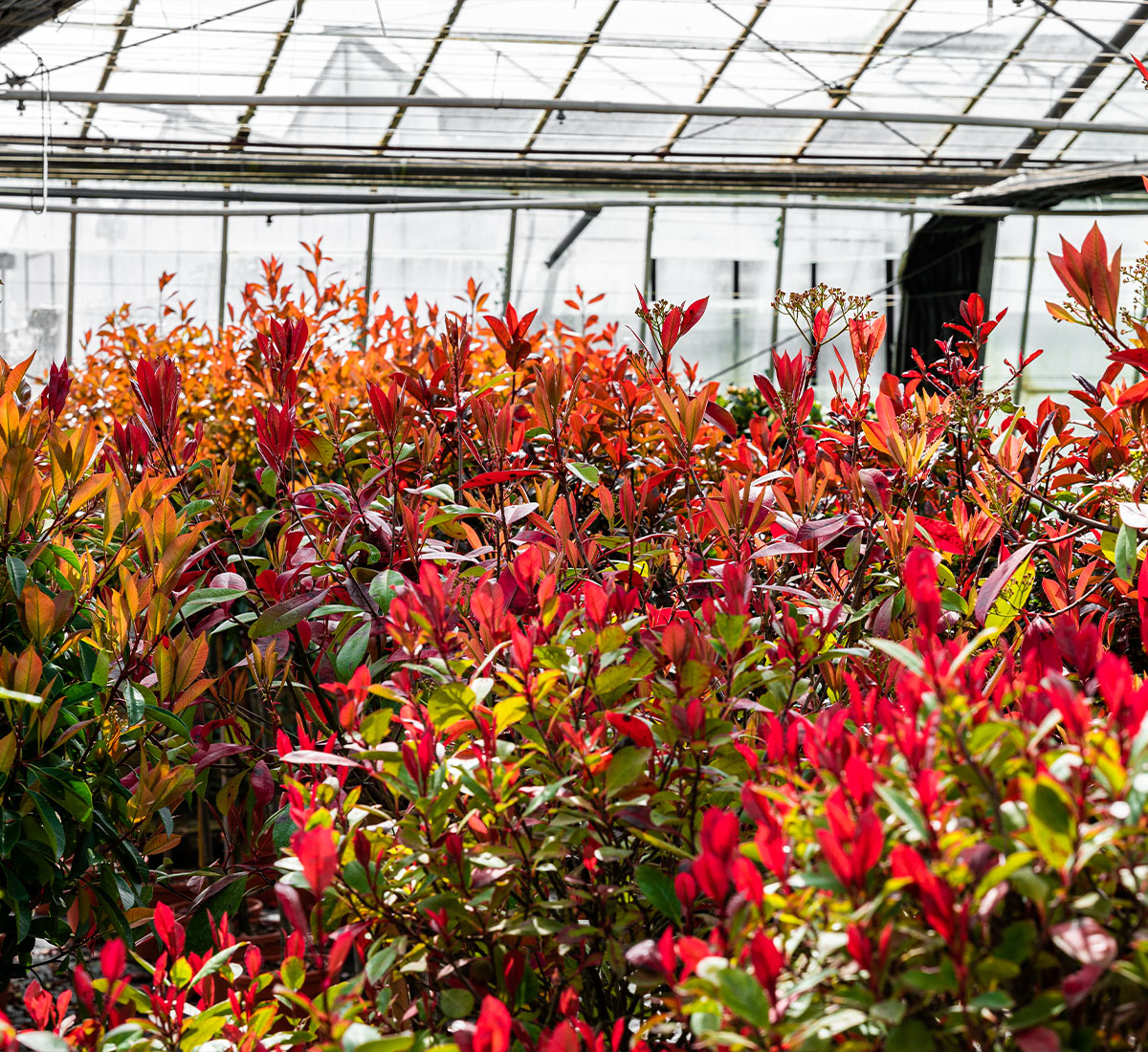
Photinia x fraseri ‘Red Robin’
Autumn
Autumn is the richest season for variety, with leaves, berries, and fruit all coming to the fore. Maples such as Acer rubrum or Acer palmatum cultivars provide some of the best displays, with foliage shifting to red, orange, and yellow as temperatures fall. The UK native Betula pendula, or silver birch, turns a clear golden yellow before its leaves drop, leaving striking white bark for the winter.
Berries offer another dimension of colour. Ilex aquifolium, the native holly, is a popular choice, producing red berries that stand out against glossy evergreen leaves. Sorbus aucuparia, or rowan, is another UK native, with clusters of red or orange berries that support birds well into winter. Crab apples such as Malus ‘Evereste’ provide persistent fruits that decorate branches long after flowering has finished.
Our picks for Autumn colour:
Acer rubrum (Red Maple)
Medium-sized tree with fiery red and orange autumn foliage. One of the most dramatic colour displays of the season.
Acer palmatum (Japanese Maple)
Compact and ornamental, with foliage turning scarlet, orange, or yellow in autumn. Widely used for seasonal contrast.
Betula pendula (Silver Birch)
UK native with golden-yellow autumn leaves. Striking white bark provides further winter appeal.
Ilex aquifolium (Common Holly)
UK native evergreen. Glossy green leaves paired with red berries in autumn and winter. Supports birds and pollinators.
Sorbus aucuparia (Rowan or Mountain Ash)
UK native tree producing clusters of red or orange berries in autumn. Foliage also colours to yellow before leaf fall.
Malus ‘Evereste’ (Crab Apple)
Fruits persist into autumn and winter, providing colour and food for birds. Works as a seasonal link across multiple months.
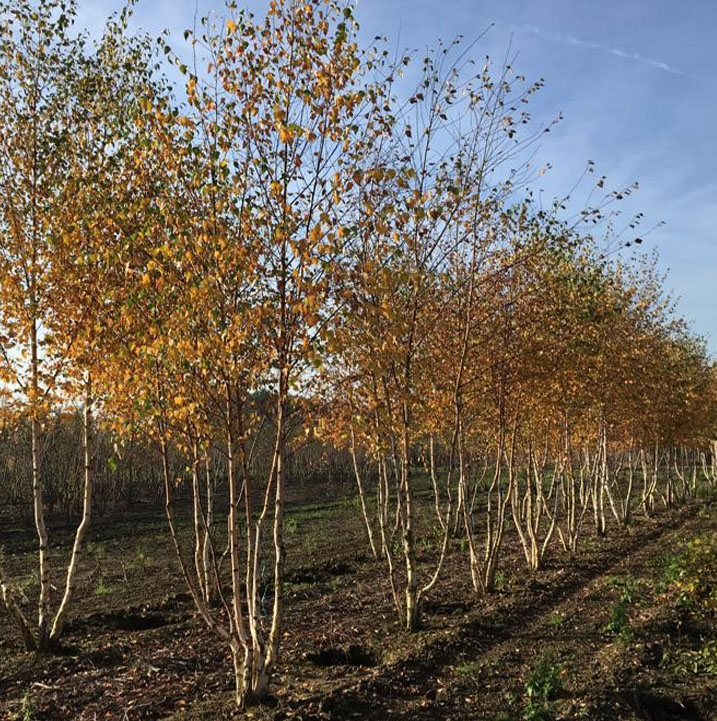
Betula pendula
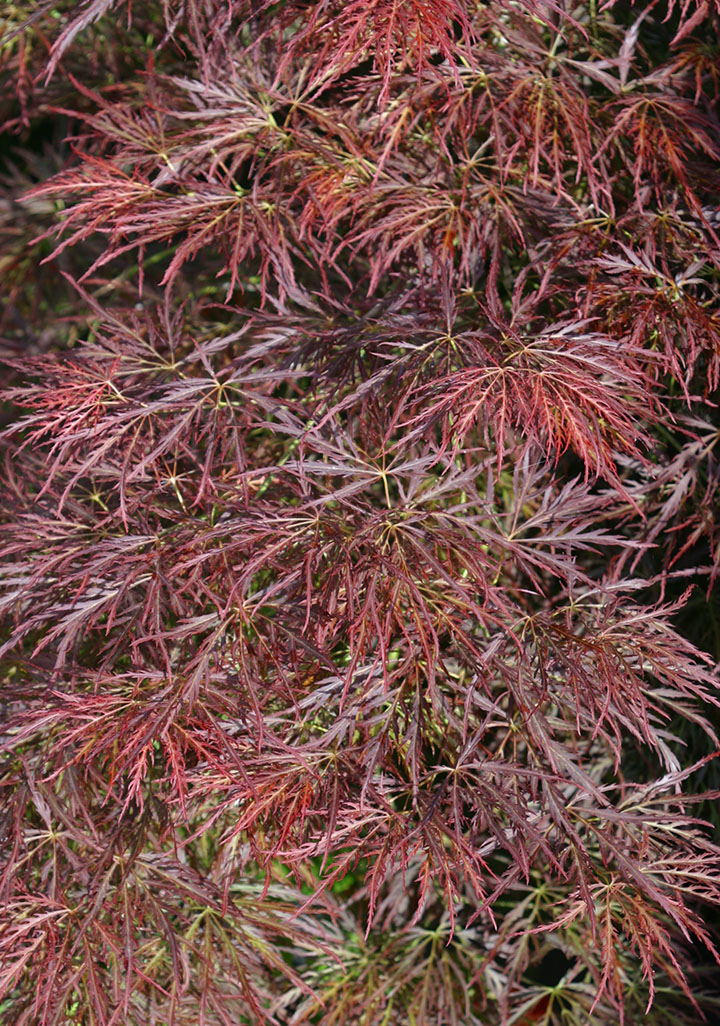
Acer palmatum ‘Ornatum’
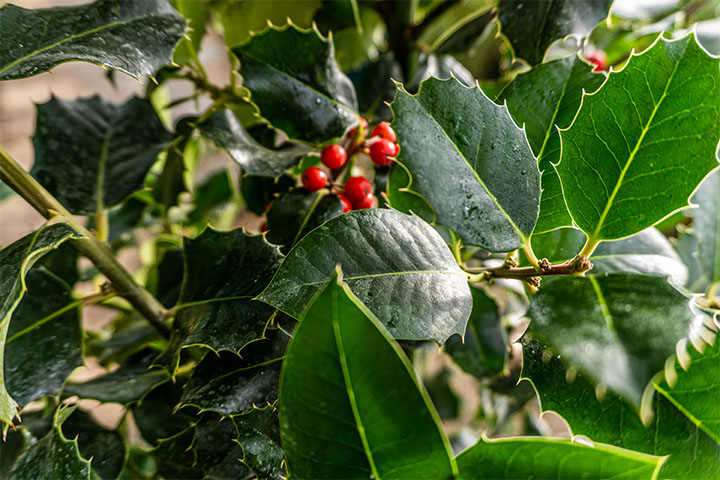
Ilex aquifolium
Winter
Winter is often thought of as a bleak and colourless time of year for gardens, but it can be one of the most striking seasons in a well-planned scheme. Stems and bark take centre stage. Cornus alba ‘Sibirica’ and Cornus sanguinea ‘Midwinter Fire’ are two of the best dogwoods for winter stem colour, with vivid red, orange, or yellow shoots standing out against frosty landscapes. Salix alba ‘Britzensis’, a type of willow, provides similar fiery stems.
Trees can also offer winter interest. Betula utilis var. jacquemontii has gleaming white bark that catches low winter light, while evergreens such as Mahonia x media provide yellow flowers at a time when little else is in bloom. These features extend the season of colour and ensure that landscapes remain engaging even in the quietest months.
Our plant picks for winter interest:
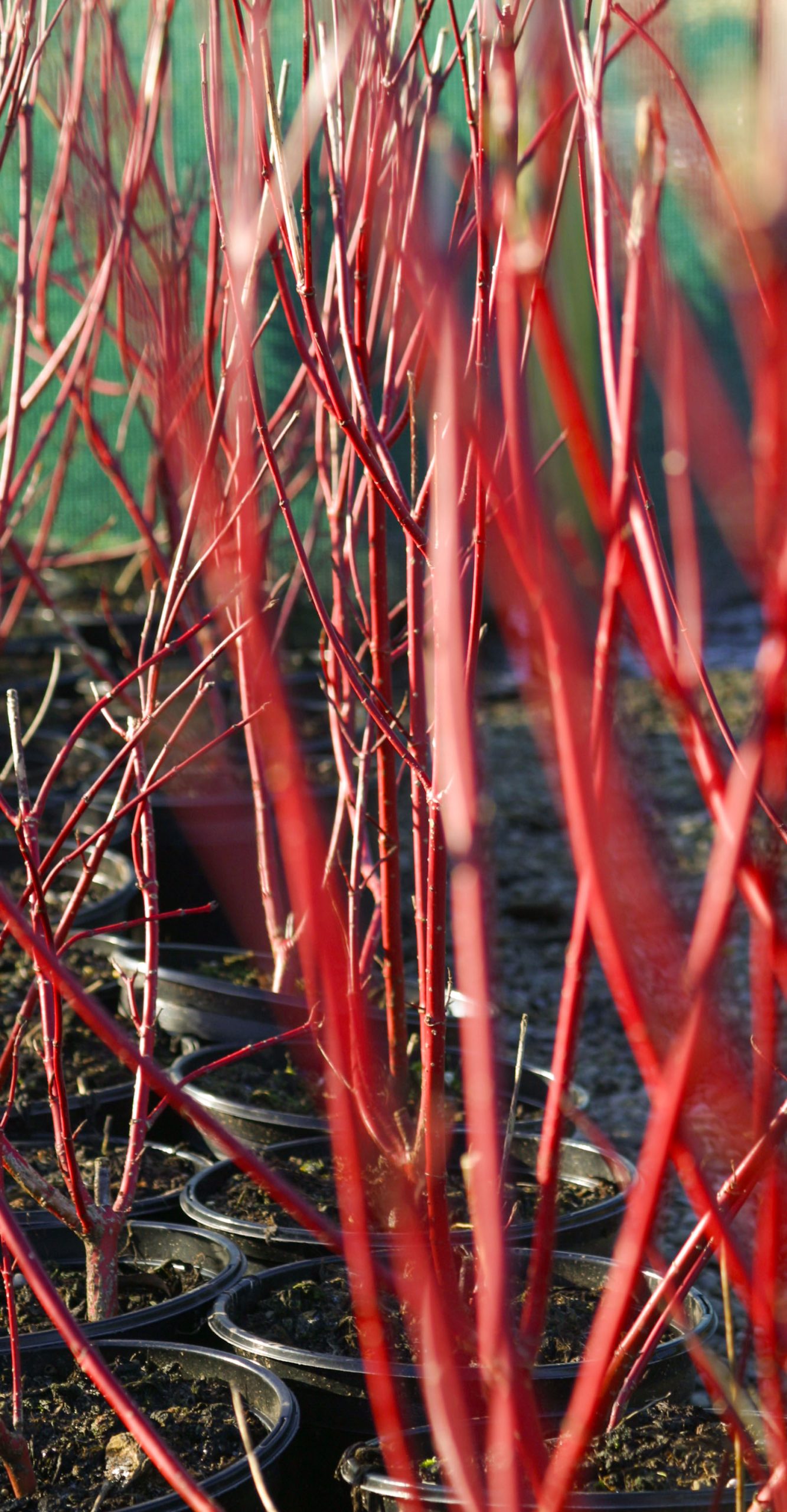
Cornus alba ‘Sibirica’
Cornus alba ‘Sibirica’ (Red Dogwood)
Bright red stems stand out in low winter light. Provides lush green foliage in summer, but is best cut back to encourage strong winter colour.
Cornus sanguinea ‘Midwinter Fire’ (Dogwood)
Fiery red, orange, and yellow stems create dramatic winter displays. Foliage adds interest in summer and autumn.
Salix alba ‘Britzensis’ (Scarlet Willow)
Fast-growing willow with vivid orange-red winter stems. Strong structural colour in large landscapes.
Betula utilis var. jacquemontii (Himalayan Birch)
Noted for its gleaming white bark that catches winter light. Works well in groups or as a feature tree.
Mahonia x media (Mahonia)
Evergreen shrub with spiky leaves and clusters of yellow, scented flowers in late winter. A reliable food source for pollinators.
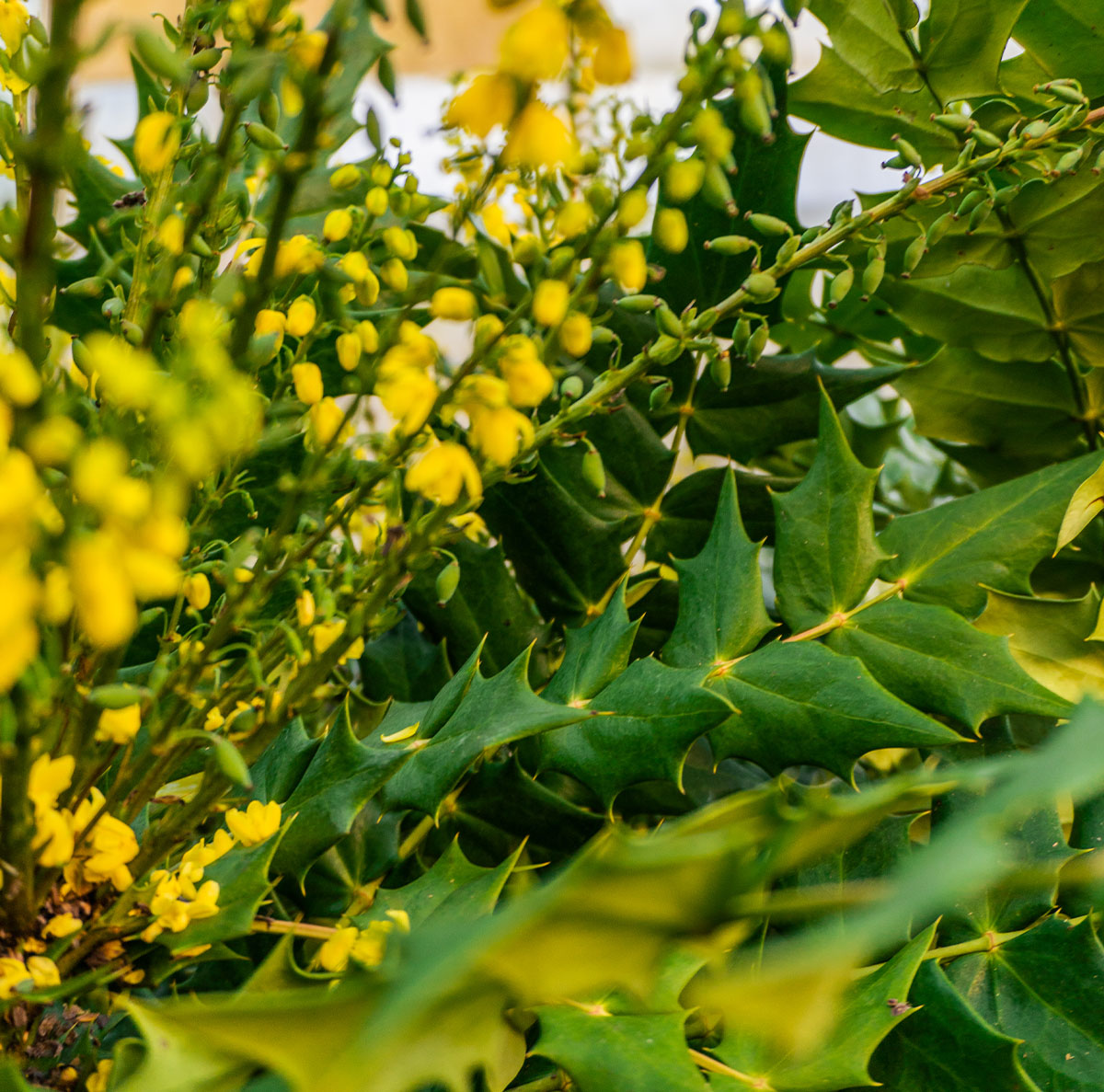
Mahonia x media ‘Charity’
Five plants for year-round colour
Some plants are particularly valuable because they offer multiple features across the seasons, contributing colour for much of the year.
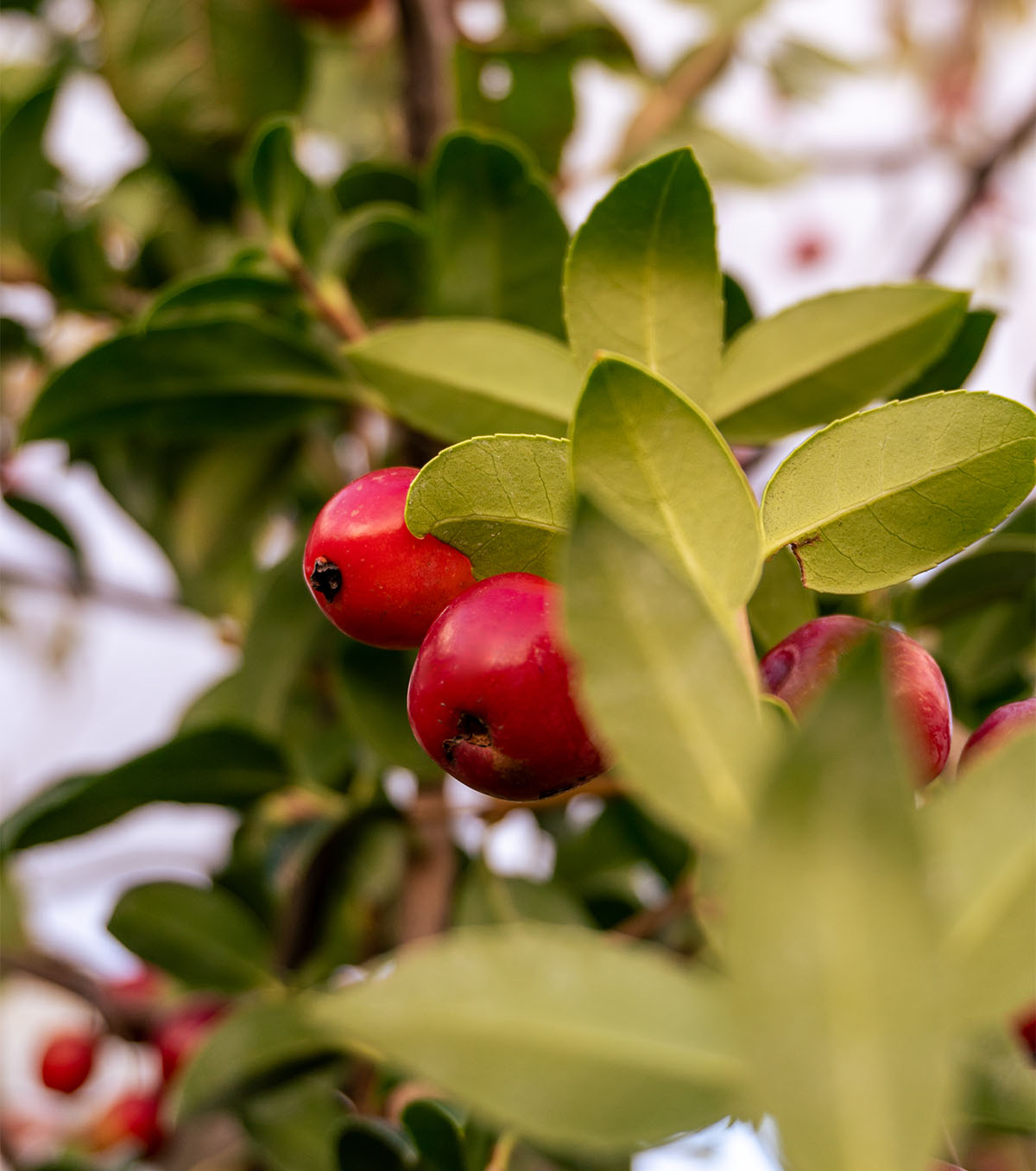
Malus ‘Evereste’
Cornus alba ‘Sibirica’
Green foliage in spring and summer, turning red in autumn. Winter stems glow bright red, adding dramatic seasonal colour. Low-maintenance shrub that thrives in a wide range of soils.
Malus ‘Evereste’
Crab apple with spring blossom in white and pink, followed by fresh green foliage. Summer fruits form and mature into striking orange-red crab apples that persist into winter, providing food for birds.
Acer palmatum ‘Sango-kaku’
Japanese maple with delicate green foliage in spring, turning golden-yellow in autumn. Coral-red winter stems provide structure and colour through the bare months. Prefers sheltered spots with well-drained soil.
Hydrangea quercifolia
Oak-leaved hydrangea with large summer flowerheads in white, fading to pink. Leaves turn rich shades of burgundy and red in autumn. Peeling bark adds winter interest. Excellent shrub for mixed borders.
Ilex aquifolium
Classic evergreen holly with glossy dark foliage. Tiny white flowers in spring give way to bright red berries in winter, especially valuable for wildlife. Provides structure, colour, and shelter year-round.
Year-round colour is achievable in any landscape with the right mix of plants. By looking beyond flowers to foliage, fruit, and stems, planting schemes can remain vibrant across all four seasons. Understanding the science behind these features allows designers to anticipate when and how colour will appear, while choosing resilient, adaptable species ensures success in a wide range of conditions.
To explore planting options that bring lasting colour to your projects, speak to the G Team. We are here to help you design schemes that deliver impact in every season.

